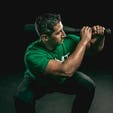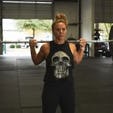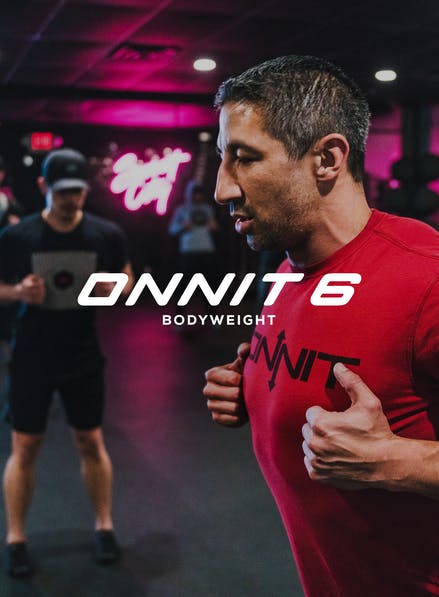Too many trainees and athletes are quick to overlook (and sometimes forget) about the bodyweight workout. Even so, you can become very strong when training with just your bodyweight.
Bodyweight training is all about the basics and the truth is, no matter how advanced you are, your body will always fall back on its base level of strength. Your overall bodyweight strength will always serve as the foundation and bridge to your other strengths.
When it comes to the basics of bodyweight training, you should be familiar with all of the essential movements: squats, lunges, push ups, pull ups, rows, and plank variations. You should also have the ability to climb, crawl, sprint, and jump. These are primal movements.
Obviously there are hundreds, if not thousands of different variations for each of the basic bodyweight training movements out there, but no matter what, all of them come back to being able to perform the basics.
Bodyweight training serves as your foundation and is the driver of all of your other strengths and skills. Strength tools such as kettlebells, dumbbells, barbells, and sandbags are useless without having the proper bodyweight strength and conditioning foundation.
One of my biggest pet peeves is when young athletes or new clients come into my gym and they get frustrated when I don’t quickly put them under a heavy barbell to see how much weight they can lift.
Most of my clients (and even advanced athletes) have HORRIBLE form and technique when they first come in; this is totally normal, and quite frankly, all too common.
I’ve always made it a point to go bodyweight training first and to make my clients prove to me and themselves that they are strong enough to handle their own bodyweight correctly and efficiently before using other strength tools extensively.
Bodyweight Workout Program for Strength and Conditioning: Bodyweight Standard
Duration: 30-40 minutes
Frequency: 3x per week
Exercise Type: Strength training
Intensity: Steady, deliberate
Repetitions: Varies by workout
Rest: As needed
The rule of thumb I have for my clients and athletes is that they have a solid level of bodyweight strength before they go on to any external types of resistance. You should easily be able to perform the following:
1. Standing Poses – Build leg strength as well as flexibility in the hips and hamstrings.
2. 25 “Ass to Grass” Bodyweight Squats.
3. 5 Chest-to-Bar Pull Ups (any variation).
4. 25 Chest-to-Deck Push Ups
5. 25 Lunges per Leg Non-Stop.
6. 3 Handstand Push Ups OR 5 Pike Presses.
7. 20 Recline Rows.
8. 10 Hanging Knee Tucks.
9. 90 sec Basic Plank Hold.
The Bodyweight Gauntlet

One of the best types of tests that I like to put my athletes and clients through challenge their general bodyweight conditioning and strength levels is the Bodyweight Gauntlet.
I’ve always been a huge believer of training aggressively and pushing your body to the limit in order to take your results to the next level. Yes, there are progressions to follow, but the bottom line is that in order to get the best results possible, you must attack your workouts relentlessly.
Basics are always important, but intensity and focus should be number one over everything else!
The Bodyweight Gauntlet features four essential movements:
1. Push Ups – any variation
2. Strict Pull Ups – all grips and variations
3. Squats – ass to grass only!
4. Burpees – chest to floor with a jump at the top
Perform an all out, three minute set of each exercise and keep track of all of your reps.
For a beginner, this can get brutal real quick. As a person progresses overtime, they’ll start to see the differences in strength and overall conditioning quickly.
I don’t recommend an absolute beginner to take this on. I’ll usually have a complete beginner progress through each of the four basic movements first to get a solid base of bodyweight strength and conditioning built up before I let them loose on the Bodyweight Gauntlet.
While this may look like nothing more than a simple conditioning test, the real key to success is having a solid base of bodyweight strength to begin with. From there, it’s all about improving on this strength and increasing your efficiency of each movement over time.
Try it out and take the test to see where you’re at. Are you a BEAST or just a Proven Soldier? Leave your comments and score!
Beyond Bodyweight Training Basics
Now, beyond the basics of bodyweight training, you must understand that in order to get stronger with your own bodyweight, you must start to progress in difficulty.
Being able to bang out squats, push-ups, lunges, and pull-ups by the dozens or even hundreds is pretty good, but to what point? This will indeed help you achieve more conditioning-wise, but overtime, you won’t get that much stronger maximum strength-wise.
In order for your training to be truly effective in helping you gain more strength, you must start to build more strength with more progressed movements over time.
This is where different forms of advanced bodyweight exercises come into play.
A great way to enhance your training and make it more advanced is to make it explosive by increasing the speed of the movement.
While this won’t work strength directly, it will help the body move with more force and speed which will ultimately crossover into helping you increase in overall strength. The faster you can move, the better.
One of my main coaching cues to my athletes and clients is to always be as explosive as possible with your movements during the concentric phase. I want my people to be thinking about lifting fast, never slow.
Obviously, I want people to be under control during the eccentric portion of the movement, but when it’s time to contract, you must contract with speed!
An example of this would be the push-up. Imagine yourself at the top of the movement; as you descend down into the push-up, you want to keep your whole body tight from head to toe (core especially).
A key point is that your whole body should work as one solid unit, never in parts, so keep your whole body engaged throughout the movement. As you come down you want to be in control.
You don’t have to go slow, but make sure to be under control. This is the eccentric portion of the movement. Now, as you come back up, you want to imagine moving your body as fast and as explosively as possible.
This is the concentric portion of the movement and you always want to focus on moving as fast as possible here.
Once you start to really slow down with your movement and you can’t move as fast as you know you can, (i.e. you start to grind out your reps), that’s a good point to stop your set.
This is known as “submax” training and this is a very important key to focus on to help increase bodyweight strength overtime. I refer to this point a lot when training push ups, pull ups, and rows.
I see too many people do these movements to failure, and when you train like this all the time, you fry out your central nervous system.
To make a long story short, it takes your central nervous system a lot longer to recover than it does for your muscles, so whenever you train to failure, it’s going to take your body a lot longer to recover from your workout.
Recovery and Bodyweight Training
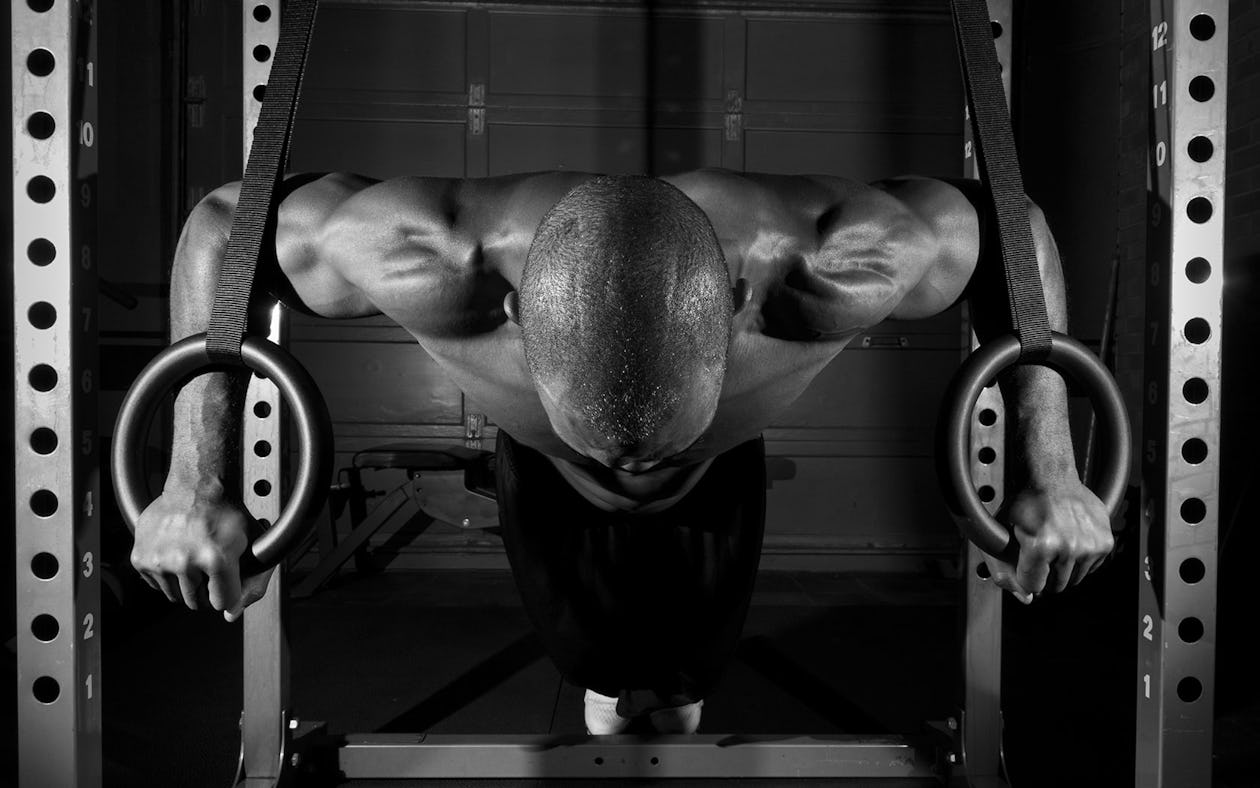
Getting stronger requires your body to recover, and if you’re always cashed out from taking all of your movements to clear failure, you’ll be struggling at getting stronger, faster.
The overall point of this is to focus on being FAST with your movements and avoiding taking your sets to failure most of the time. Be efficient and crisp with your movements and you’ll continue to progress. Just think: quality over quantity.
Another way to increase your overall strength is to use advanced variations of movements. Obviously, if you’re not someone who can do advanced movements, you need to work through your progressions.
When it comes to building up more strength via bodyweight movements, it should be a no-brainer to make the movement harder.
One of the simplest ways to make a bodyweight movement more advanced is by moving the positioning of your feet or hands.
I’ll use the push up as an example again: a simple beginner’s push up would be your regular push up from the floor, the next level would be a push up with your feet elevated on a box.
You could also implement the use of a suspension trainer and do push ups while holding the straps or having your feet suspended in the straps. You could also do extended range of motion push ups with your hands on medicine balls or boxes.
There’s pretty much a limitless amount of things you can do to progress.
You can implement speed and power into the mix by doing explosive plyometric push-ups which would be another way to make your normal push-ups even harder.
One of the top progressions would be to totally remove the opposite arm out of play and perform single arm push ups.
The point is, there are literally thousands of ways you could progress your different bodyweight training movements to make them harder. The harder you make them, the more strength you’ll build up in the end.
Switching over to the lower body, another example would be squat progressions. Obviously, you would start off with your basic bodyweight squat, making sure to always get your “ass to the grass” first and then progress from there.
One of the first things you could do to make it more difficult is to add an explosive jump at the end of your squat. This would be another example of manipulating the speed of your movement.
You could also hold your hands overhead in a prisoner position or an overhead position to make it more difficult. To take things up another notch, implement the single leg squat (also known as a pistol squat).
Bodyweight Standard Tips and Tricks
Master your basic squat, push up, pull up, row, lunge, and your abilities to sprint, jump, climb, and crawl. Once you get those down, you can then move on to the more advanced movements.
2. Train FAST
Focus on performing your movements as crisp, clean, and explosive as possible.
3. Avoid Failure
Grinding out reps by going to complete failure will have you regressing in the long run. Leave a few reps left in your tank each set. This will keep you fresh and allow you to train aggressively more often.
4. In Reference To The Bodyweight Gauntlet
Make sure you only do this type of challenge every 4-6 weeks since you will be pushing yourself beyond failure when doing so. Doing the Bodyweight Gauntlet or a similar type of extreme workout too much and too often will result in a decrease in overall results.
How To Stretch For A Bodyweight Workout
Follow the videos below for routines to warm up your entire body before a workout. For more tips on mobility and stretching, follow Onnit’s Durability Coach, Cristian Plascencia, on Instagram (@cristian_thedurableathlete).
Bodyweight Exercises and Workouts
The following are three different levels of workouts: Beginner A and B, Intermediate A and B, and Advanced A and B. The workouts are progressive in nature, so if you are a beginner, you would want to start on the beginner workouts A and B and then progress to the intermediates then hit up the advanced.
The workouts are set up in such a way that you’ll first hit an explosive/plyo-type movement to get the body moving fast, hyping it up for the rest of the workout.
From there, you’ll hit a few non-combative supersets using a mixture of upper and lower body strength movements, then you’ll end your sessions off with some core work. The advanced workouts end off with a short conditioning interval via a Tabata set.
If you wanted to use these workouts as a whole program, spend four weeks on each level like this:
Week 1 – A, B, A
Week 2 – B, A, B
Week 3 – A, B, A
Week 4 – B, A, B
With this, you would hit each workout six times, giving you plenty of time to increase efficiency on the different movements contained in each workout. After the fourth week, I would take an off-week to allow the body to recover, then come back with the next set of workouts at the next level.
Beginners Bodyweight Workout A
Muscles Worked: Legs, back, rear delts, core.
Beginners Bodyweight Workout B
Muscles Worked: Back, legs, shoulders, core.
Intermediate Bodyweight Workout A
Muscles Worked: Legs, chest, back, core.
Intermediate Bodyweight Workout B
Muscles Worked: Legs, chest, shoulders, core.
Advanced Bodyweight Workout A
Muscles Worked: Legs, chest, shoulders, back, core.
Advanced Bodyweight Workout B
Muscles Worked: Legs, chest, shoulders, back, core.


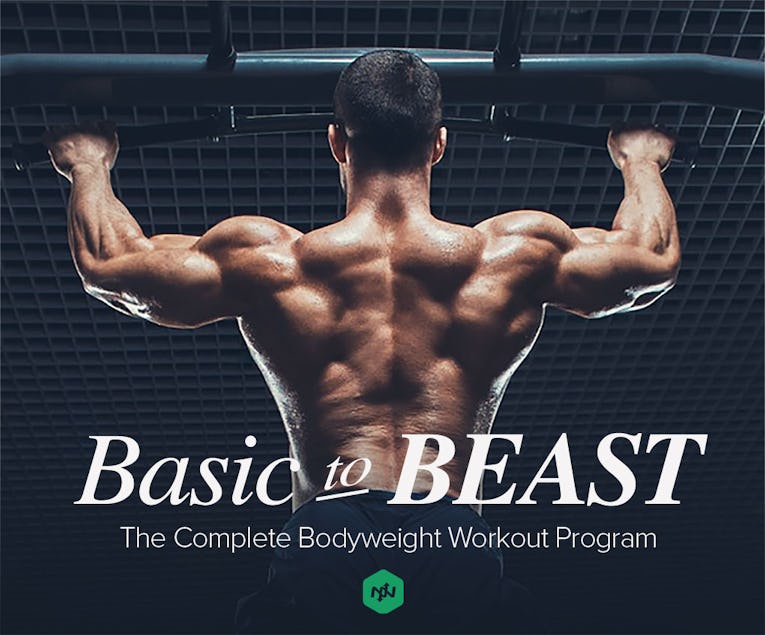
)
